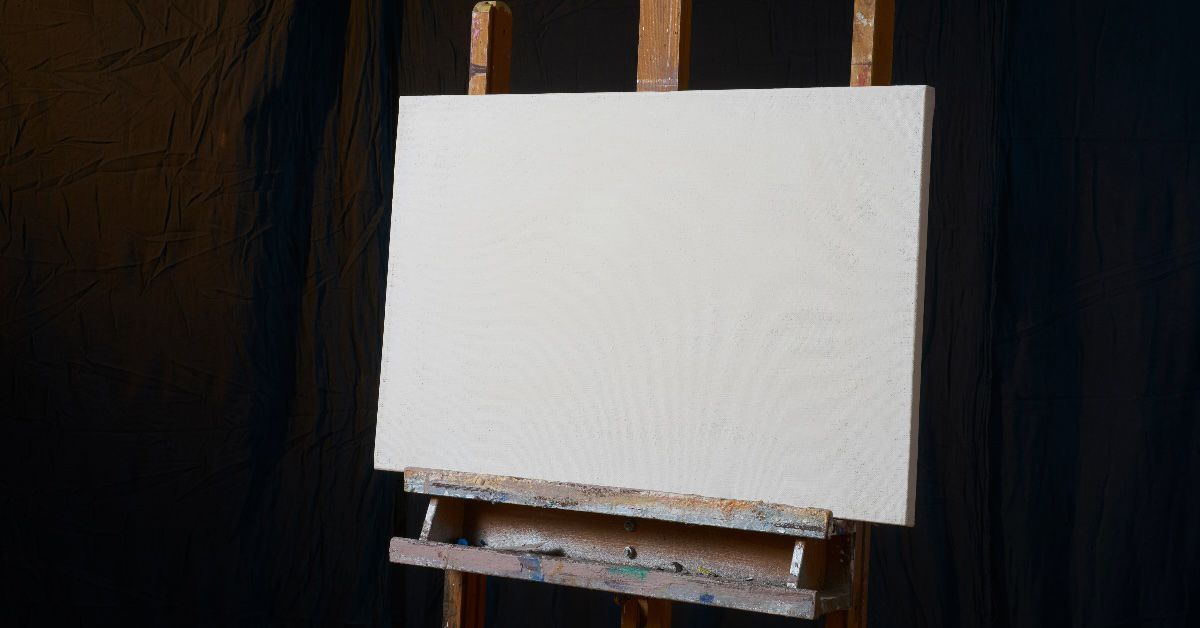Gesso is one of those words that seems to stop beginner artists in their tracks. It leaves many wondering how to use it with acrylics, or if you even need to use it in an acrylic painting at all.
Gesso and Oil Painting
Historically, gesso was made for oil painting and was traditionally used to prepare or prime a surface so oil paint would adhere to it. It is made from a combination of paint pigment, chalk and binder. Gesso would protect the canvas fibers, provide a nice surface to work on and give a little flexibility so the canvas wouldn’t crack if it was rolled. Traditional oil gesso (pronounced ‘jesso‘) could be described as more of a ‘glue gesso’ because it contains:
- Animal glue binder–usually rabbit-skin glue
- Chalk
- White pigment
Here’s an example of a traditional ground for oil painting. Gamblin Oil Painting Ground is not a “gesso,” but prepares a surface that is a balance between the rigidity of acrylic gesso and the flexibility of oil primers. This bright white, non-absorbent ground enhances color vibrancy by retaining oil in the paint.
The oil gesso creates a surface that is absorbent (this comes from the chalk) and has a ‘tooth’ (texture) which allows the paint to grab onto the canvas. So if gesso was originally used with oil painting, what’s acrylic gesso?
Acrylic Gesso
Although traditionally used by oil painters, the gesso often used today is acrylic gesso, which consists of slightly different ingredients. In fact, modern acrylic gesso is a combination of:
- Acrylic polymer medium (binder)
- Calcium carbonate (chalk)
- A pigment (usually Titanium white)
- Chemicals that ensure flexibility and long archival life
Note how acrylic gesso doesn’t contain glue. Acrylic paints are non-corrosive and are stable over time, so you don’t need to worry about paint damaging the canvas—and therefore, you don’t need the glue in the mix. Remember, traditional oil ‘glue’ gesso soaks into the canvas fibers and helps to protect them from the corrosive nature of oils, over time.
Gesso Primer
A common question regarding acrylic painting is if you need to use a gesso primer. Technically, you don’t. It provides you with a nice, slightly more absorbent surface to work on, especially if you’re working on board or raw canvas, but for a pre-primed canvas it’s unnecessary. Don’t forget your pre-primed canvas from the art store already has a layer of gesso on it. Gesso is the same as a primer, as in ‘pre-primed canvas.’
What to Look For
Fine art paint primers are essential for preparing surfaces for painting. They help to create a smooth and consistent surface that is ready for paint. Here are some of the differences between fine art paint primers:
Absorbency: Some primers are more absorbent than others. This can affect how the paint adheres to the surface and how it dries.
Tooth: Tooth refers to the texture of the surface. Some primers have a rougher texture, which can help the paint adhere better.
Opacity: Some primers are more opaque than others. This can affect how much of the underlying surface shows through the paint.
Here’s a selection of the highest-rated acrylic primers.
This post was originally published in 2016. Updated October 2023
This post contains affiliate links. As an Amazon Affiliate, We may earn from qualifying purchases.
Enjoying this article? Sign up for our newsletter!

